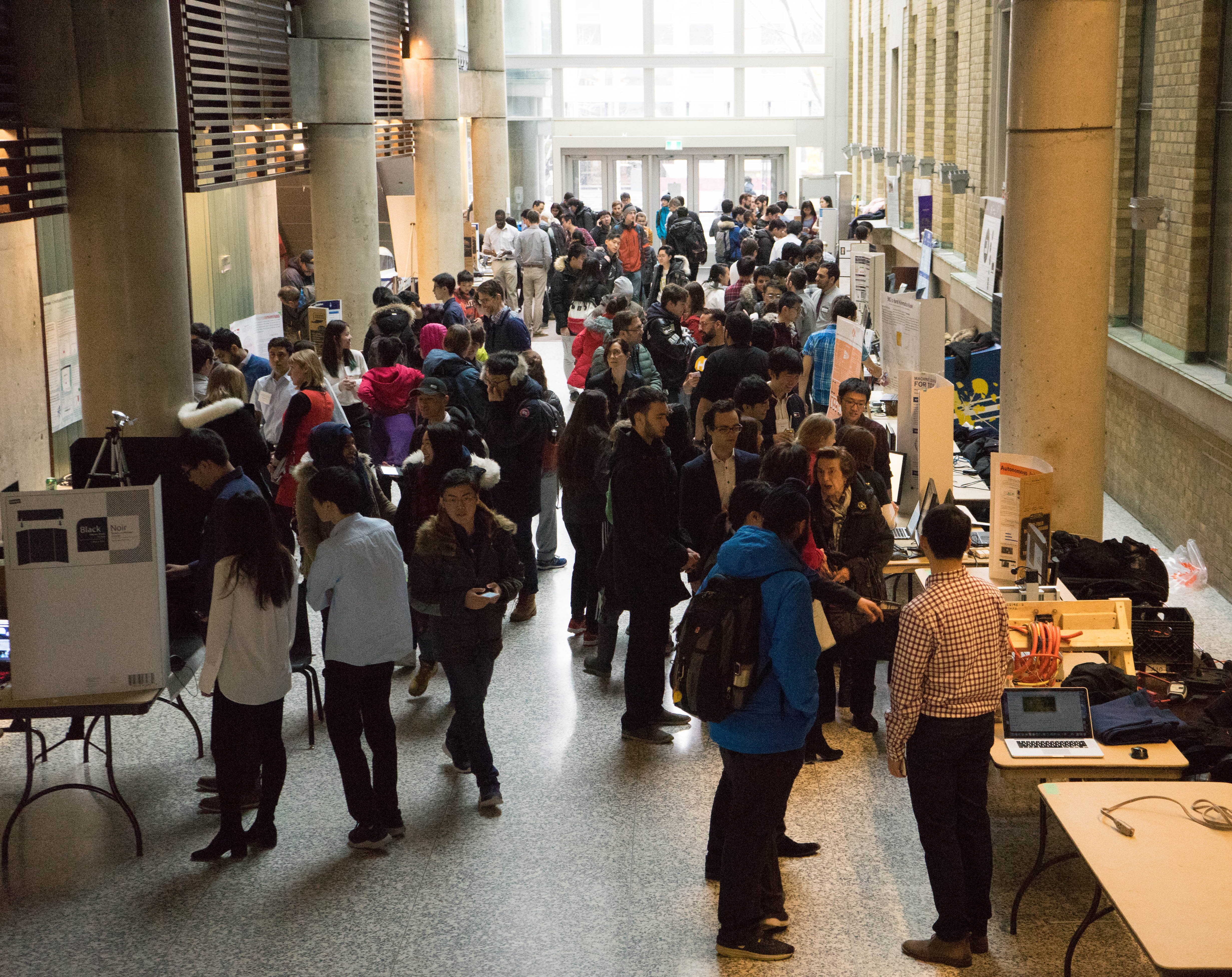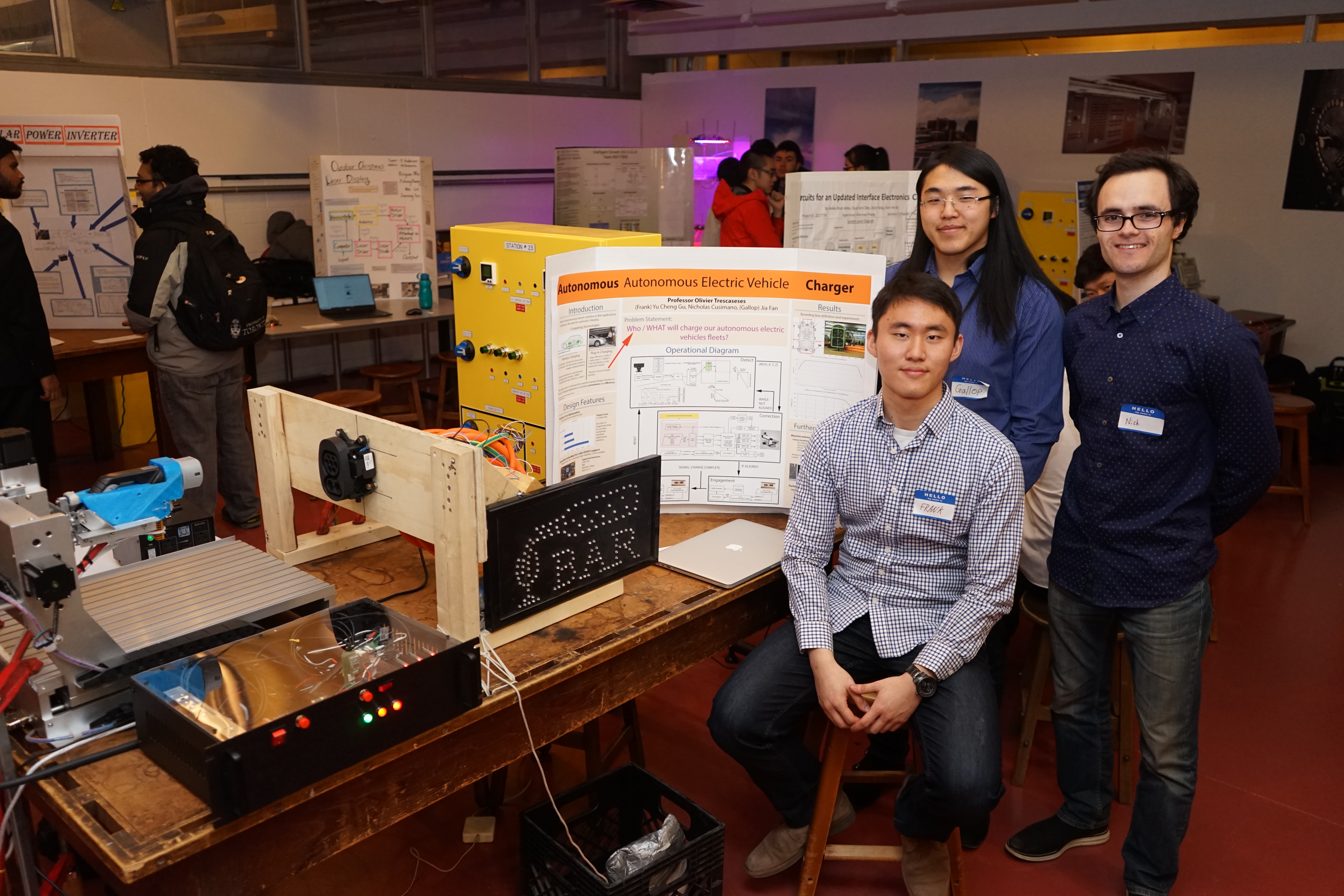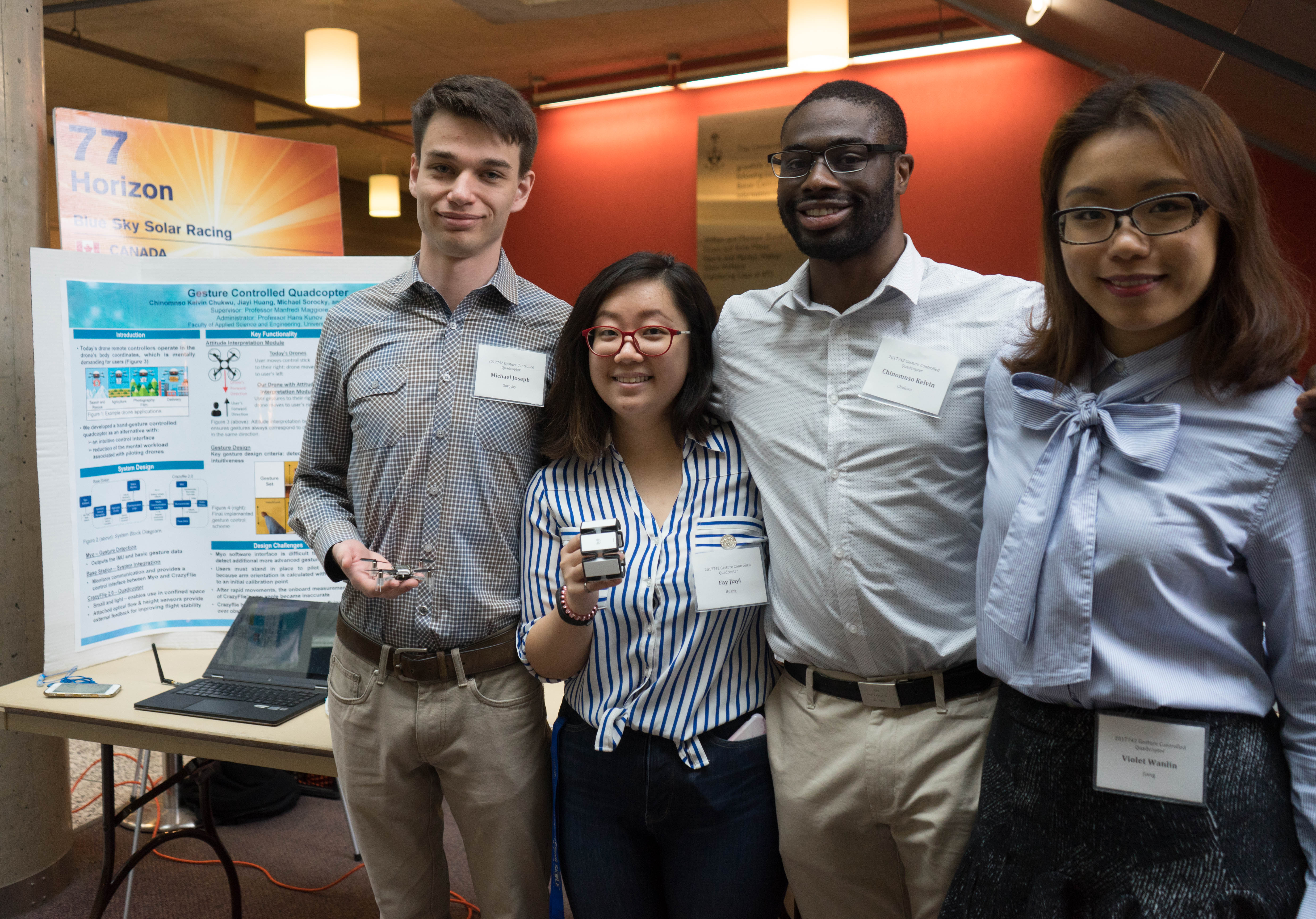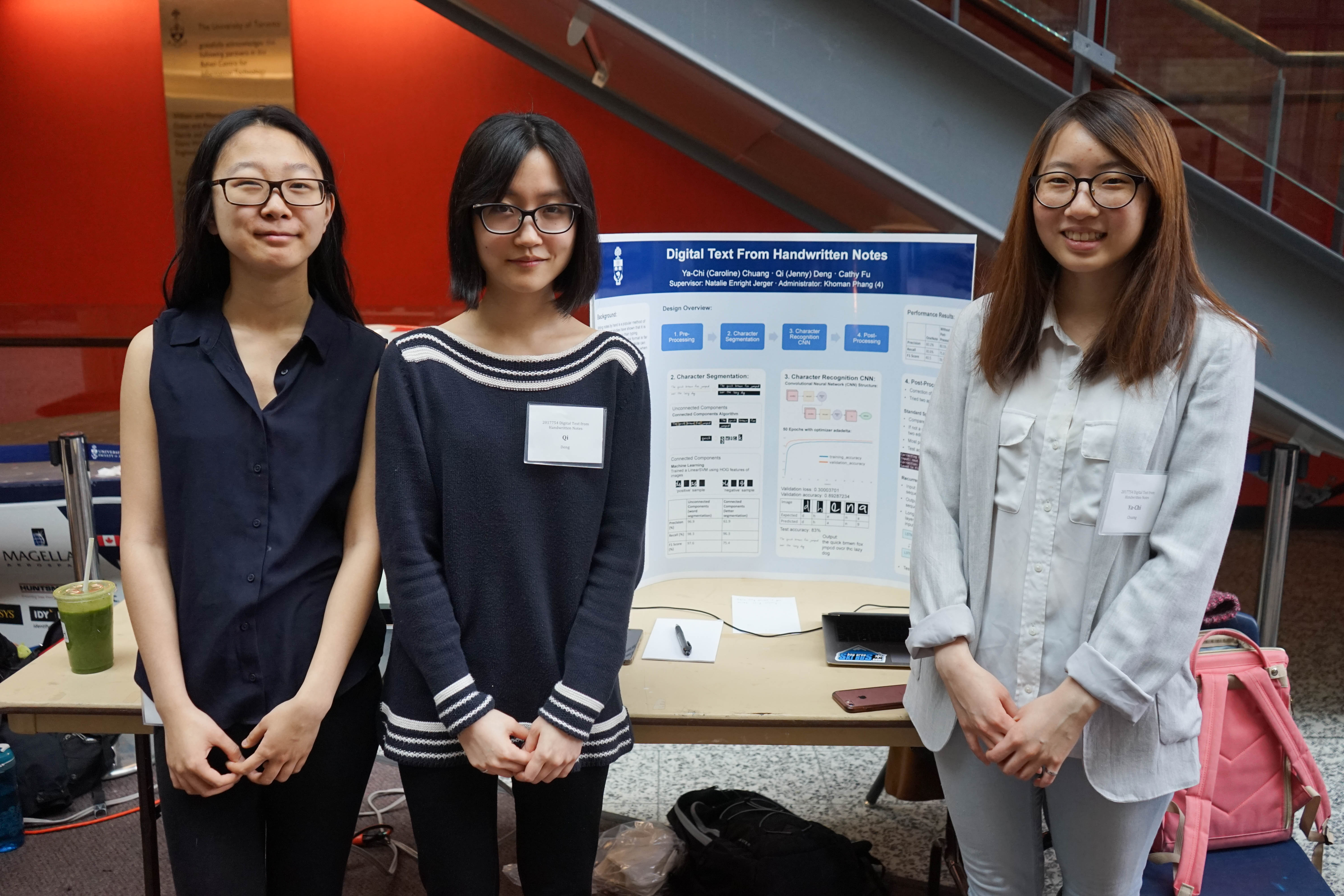
April 13, 2018
Spoiler alert: that apple in the back of your fridge is going bad.
But what if you had an application on your phone that allowed you to take a photo of whatever went into your refrigerator, assess its freshness and would send you a reminder before it spoils?
This app was just one of 85 projects designed by groups of fourth-year undergraduate students in The Edward S. Rogers Sr. Department of Electrical & Computer Engineering (ECE) over the course of two semesters. Students showcased these capstone projects during ECE’s annual Design Fair from April 3 to April 5, 2018 and the strongest projects were selected to participate in the culminating Design Showcase on Friday April 6.

Nicholas Cusimano, Frank Gu (both computer engineering students) and Gallop Fan (electrical engineering student) designed and built a working prototype of an autonomous autonomous vehicle charger. Their goal was to design a robotic electric vehicle (EV) charger that automatically inserts a charger plug into an EV’s receptacle. This technology could have significant implications for fleets of autonomous EVs in the future. “We used computer vision, 3D printing, and wireless communication to develop a low-cost solution that eliminates the need for manual charger insertion,” said Cusimano. “This project combines the convenience of wireless charging with the efficiency of plug-in charging and is potentially ten-times more cost efficient than current robotic chargers on the market.”
Drones are increasingly being used for photography, rescue missions and even package delivery but one challenge for drone

operators is that the remote controllers operate relative to the drone’s frame of reference, not the operator’s. Students Kelvin Chukwu, Fay Huang, Violet Jiang (all electrical engineering students) and Michael Sorocky (computer engineering student) developed a gesture-controlled module to eliminate this complication, enabling a more intuitive operation of a quadcopter drone. “Typically, today’s drone operators can indicate that they’d like the drone to turn left on the remote control, but that only works if both the operator and the drone agree on which direction is left; if the drone’s forward direction is opposite to the user’s forward direction, the drone will turn right with respect to the user,” said Chukwu. “We developed a hand-gesture controlled quadcopter with an intuitive control interface that reduces the mental effort associated with drone operation by making all drone movements relative to the operator’s frame of reference.”

After four years of their undergraduate experience, Ya-Chi Chuang, Cathy Fu and Qi Deng (all computer engineering students) discovered that taking handwritten notes in their lectures proved to the most effective method for information retention. Yet, handwritten notes are difficult to sift through when looking for a particular topic or keyword. To combat this challenge, the team created a tool that converts pictures of handwritten notes to searchable digital text. “We used machine learning to perform the handwriting recognition,” said Chuang. “It was a four-step process: pre-processing, character segmentation, character recognition using convolutional neural networks and post-processing — we were able to nearly double the accuracy of similar products already on the market.”
“Once again, our students have shown their talents and team abilities in the development of high caliber capstone projects,” said Professor Phil Anderson, the course coordinator. “By working over the year on open-ended projects, combining many concepts they learned as undergraduates, the teams show we should be proud of them as soon-to-be ECE grads.”
See and save photos from the Design Fair and final Design Showcase
See and save photos from the 4th Year & Alumni Event
More information:
Jessica MacInnis
Senior Communications Officer
The Edward S. Rogers Sr. Department of Electrical & Computer Engineering
416-978-7997; jessica.macinnis@utoronto.ca